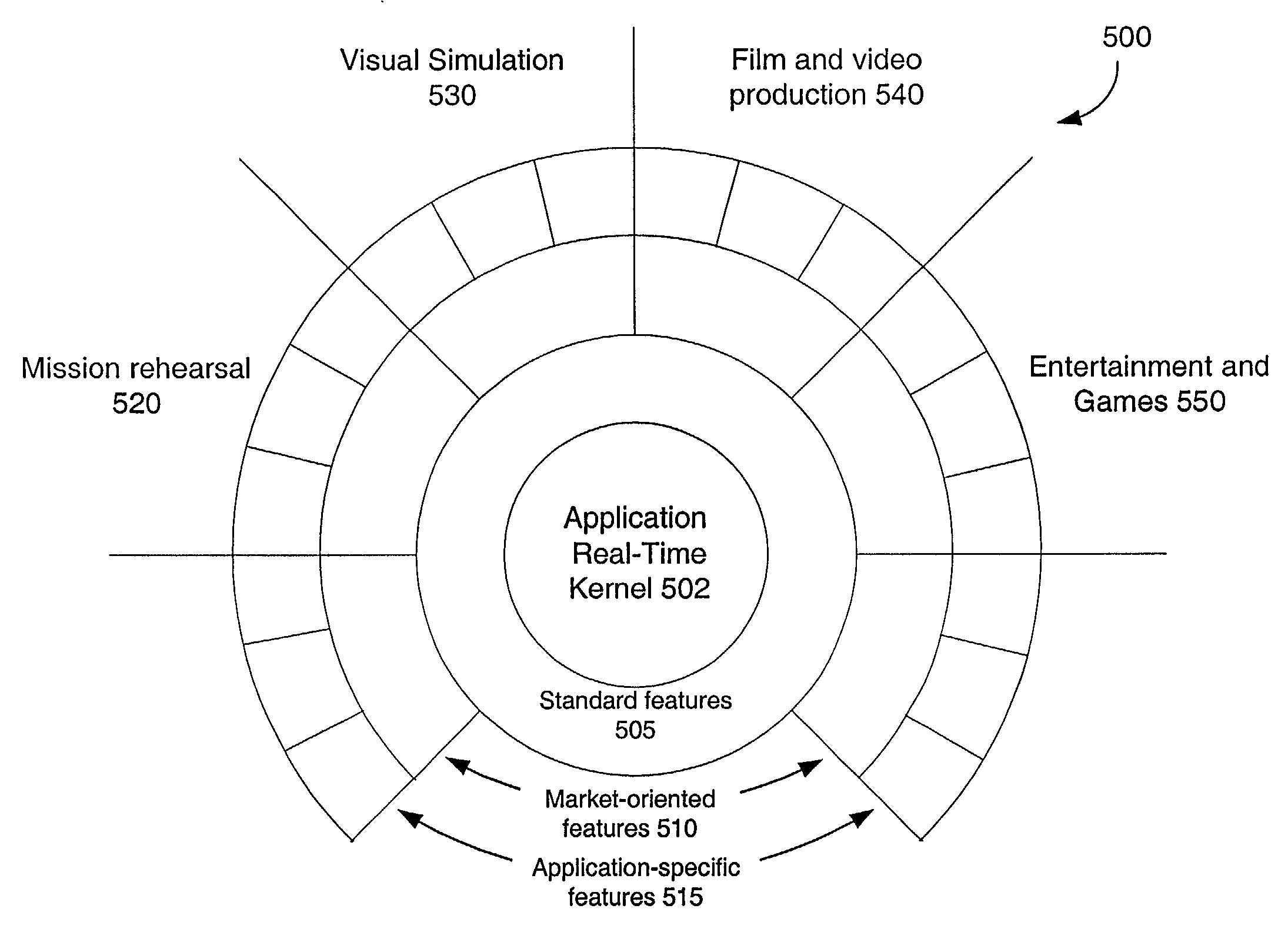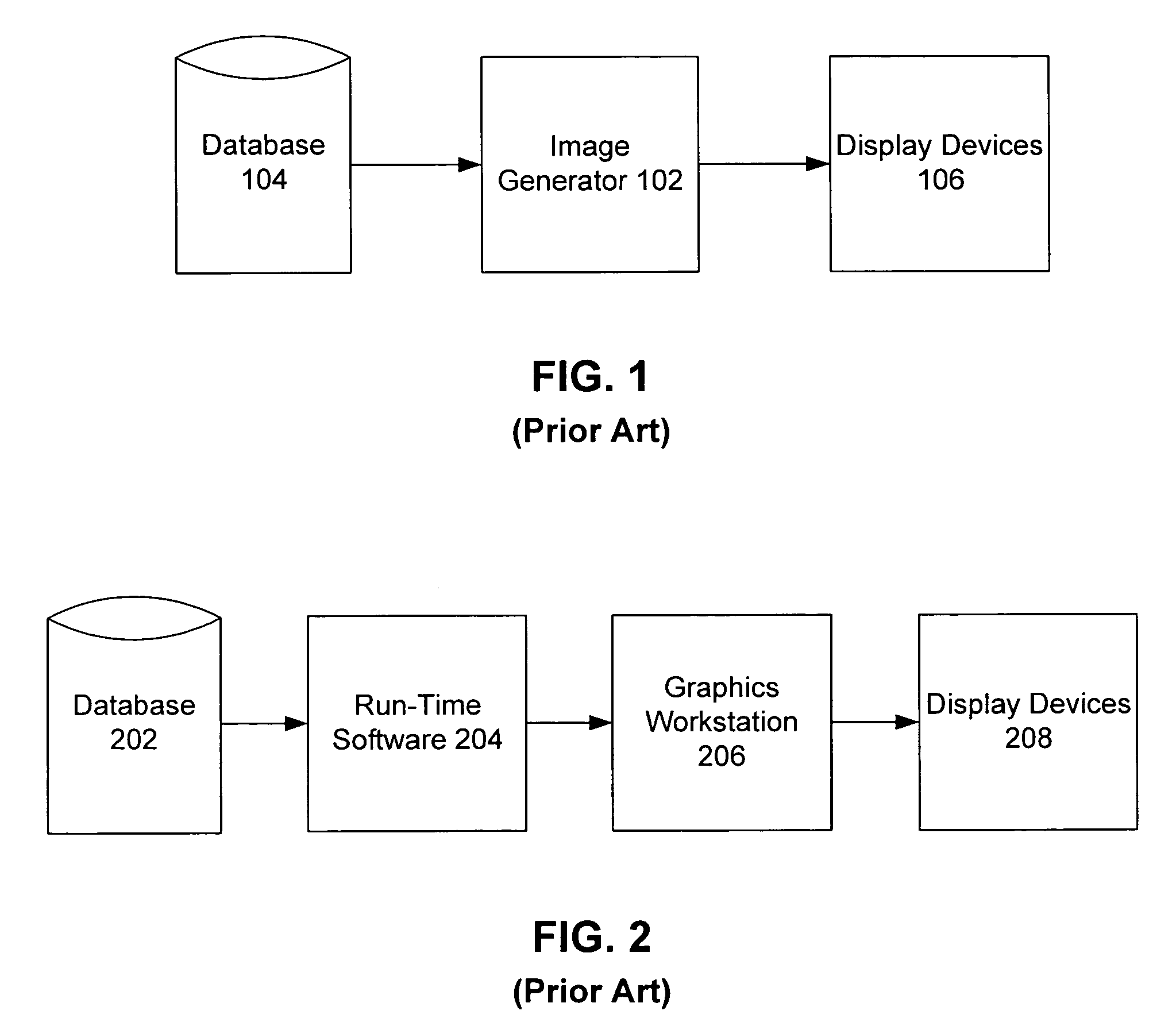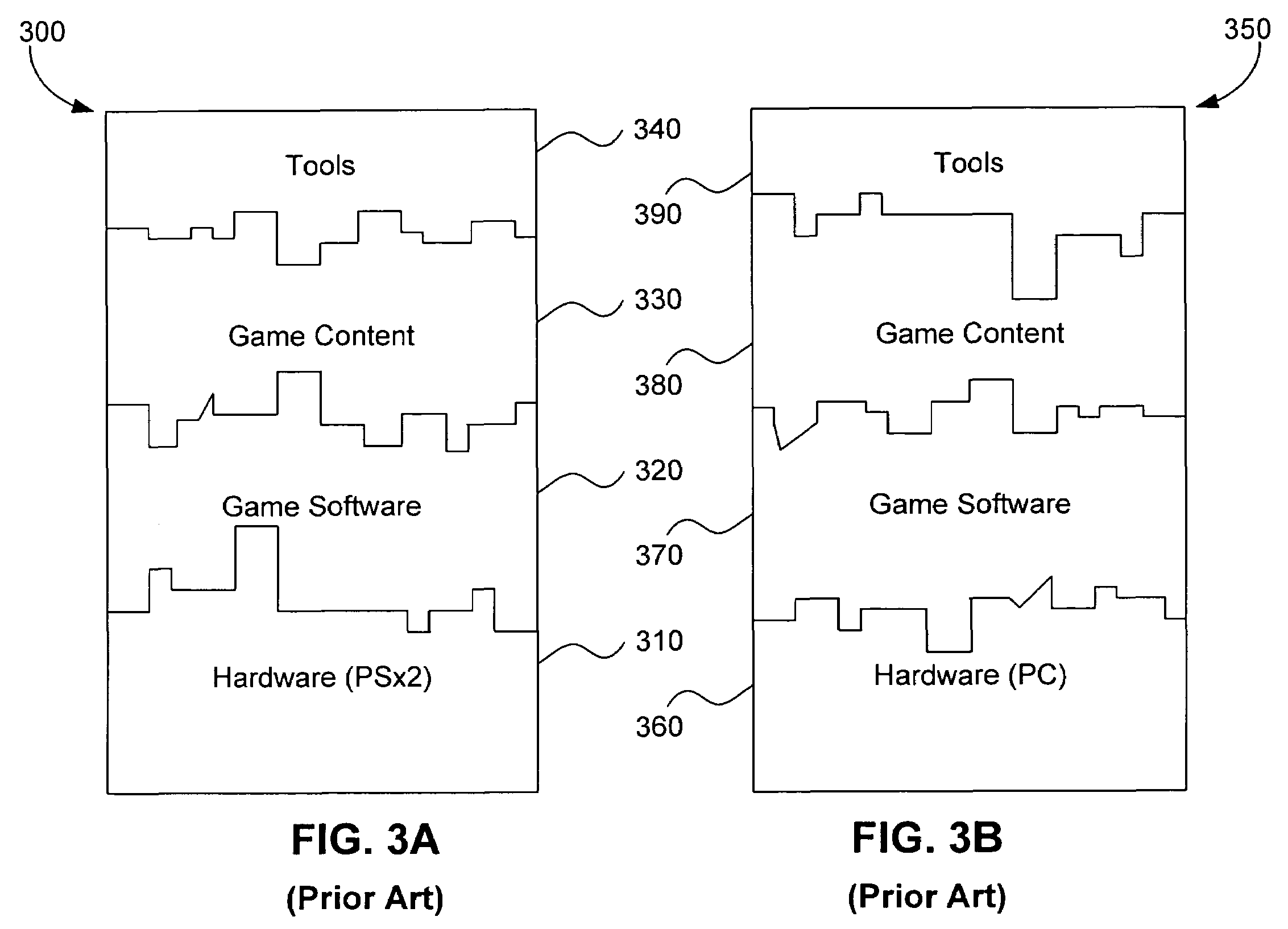System and method for leveraging independent innovation in entertainment content and graphics hardware
- Summary
- Abstract
- Description
- Claims
- Application Information
AI Technical Summary
Benefits of technology
Problems solved by technology
Method used
Image
Examples
examples
[0345]This connection wires the block's Left input to the X input of internal block A:
[0346](Connection (From ‘Left) (To ‘A ‘X))
This connection wires the R output internal block A to the input of internal connector B:
[0347](Connection (From ‘A ‘R) (To ‘B))
This connection wires the RGB output of internal block C to the block's Color output:
[0348](Connection (From ‘C ‘RGB) (To ‘Color))
This connection exist within an extension. It wires the Sum output of the extension's internal block D to the basis block's connector C:
[0349](Connection (From ‘D ‘Sum) (To ((Name ‘C)(Basis))))
[0350]Series Connections
[0351]A series connection is a special type of connection that is used in conjunction with a connector.
[0352]To perform a computation on the data that flows through a connector, the computation can be specified using a series property. The computation is inserted into the flow of data at the connector such that the data flowing into the connector is processed, producing new data at the outpu...
PUM
 Login to View More
Login to View More Abstract
Description
Claims
Application Information
 Login to View More
Login to View More - R&D
- Intellectual Property
- Life Sciences
- Materials
- Tech Scout
- Unparalleled Data Quality
- Higher Quality Content
- 60% Fewer Hallucinations
Browse by: Latest US Patents, China's latest patents, Technical Efficacy Thesaurus, Application Domain, Technology Topic, Popular Technical Reports.
© 2025 PatSnap. All rights reserved.Legal|Privacy policy|Modern Slavery Act Transparency Statement|Sitemap|About US| Contact US: help@patsnap.com



